#Allan Gardner
Explore tagged Tumblr posts
Text

Supercool Collective is adding The Return of the Living Dead's Tarman to its BigHeadz line. The 7" PVC figure is expected to ship in the first quarter of 2024.
In addition to the standard version, a glow edition is available to pre-order through November 26. They're $35 each, or you can get it autographed by special effects artists Tony Gardner and Bryan Christensen for $50.
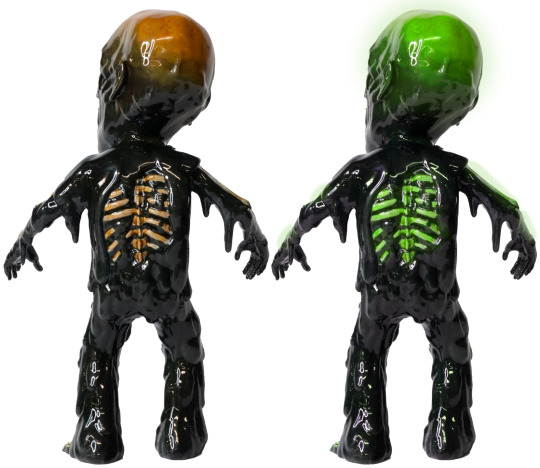
#return of the living dead#tarman#the return of the living dead#horror#80s horror#1980s horror#supercool collective#toy#gift#allan trautman#tony gardner#dan o'bannon#80s movies#1980s movies#william stout
33 notes
·
View notes
Text
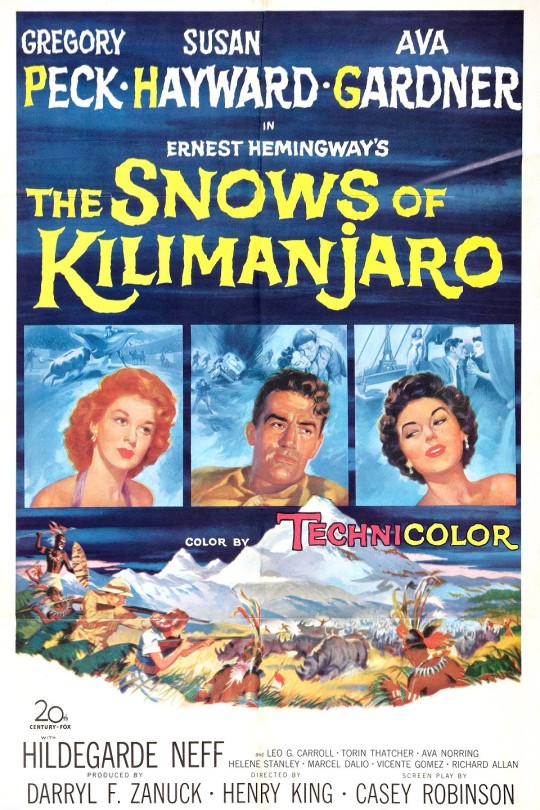
#The Snows of Kilimanjaro#Gregory Peck#Susan Hayward#Ava Gardner#Leo G. Carroll#Torin Thatcher#Ava Norring#Helene Stanley#Marcel Dalio#Vicente Gómez#Richard Allan#Henry King#1952
5 notes
·
View notes
Text
Went to the Aus v Windies T20 tonight and it was a blast! Both teams played very well, and I have nothing but praise for Windies captain Hayley Matthews. When she got out (79 off 40, skied to cover, c. Litchfield, b. Brown), instead of going back to the change room, she joined the rest of her team under the gazebo by the pitch. She won player of the match, which I think was well-deserved. The Aussie bowlers were stunning as always, but the fielding did have a couple of fumbles (still a far cry from the poor fielding of 5 years ago) and there were a couple of silly run-outs
Took my new binoculars on their maiden voyage. I managed to see one of the bowled dismissals through them, which was very awesome
Pez still with her trusty, faded, faded helmet... it'll be a sad day if she has to retire that one
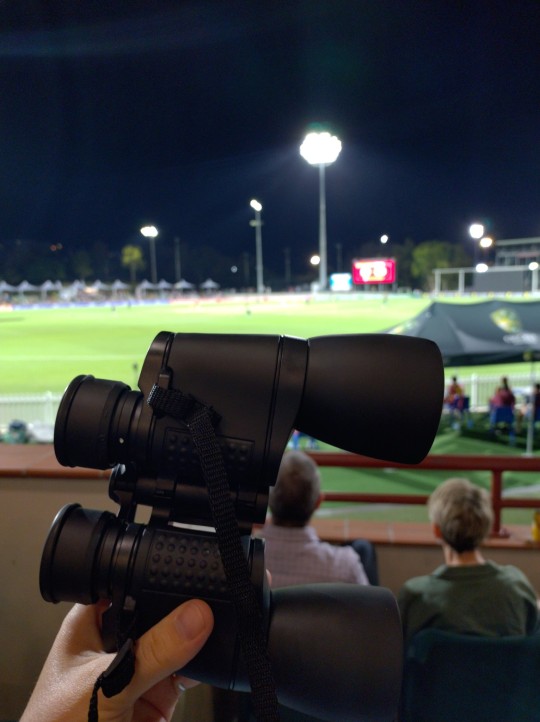
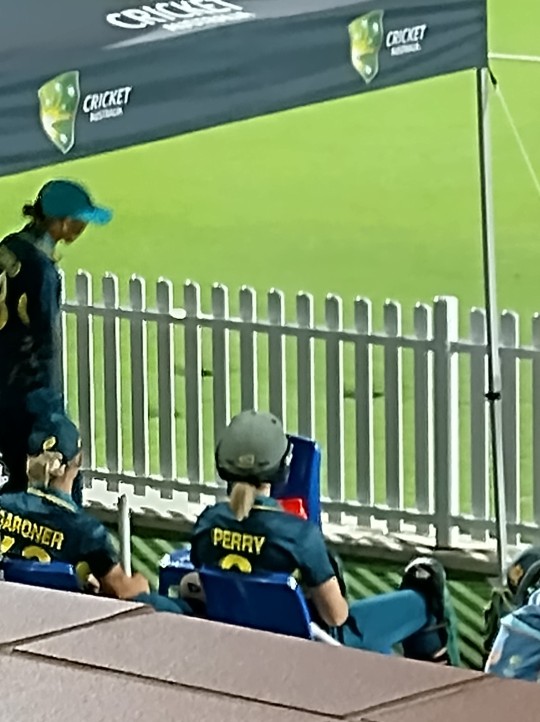
Experimented with taking some photos through the binoculars, cause my phone camera hasn't got the zoom you need for sports. Some of them turned it alright!
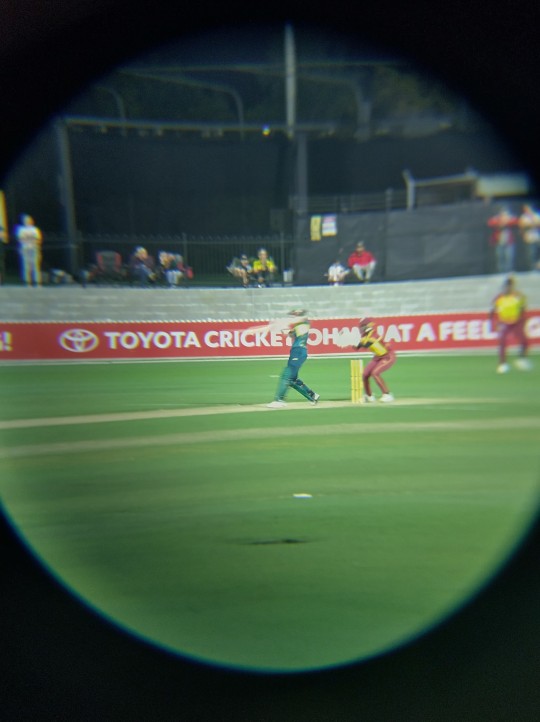

Even in their defeat, some of the Windies players still came to give autographs. Unfortunately I'm not sure whose is whose... And of course the Aussie players too, even some of the ones not playing tonight (spot Jess Jonassen's signature). There was one kid who was soooo pleased to meet Phoebe Litchfield, cause her name was Phoebe too
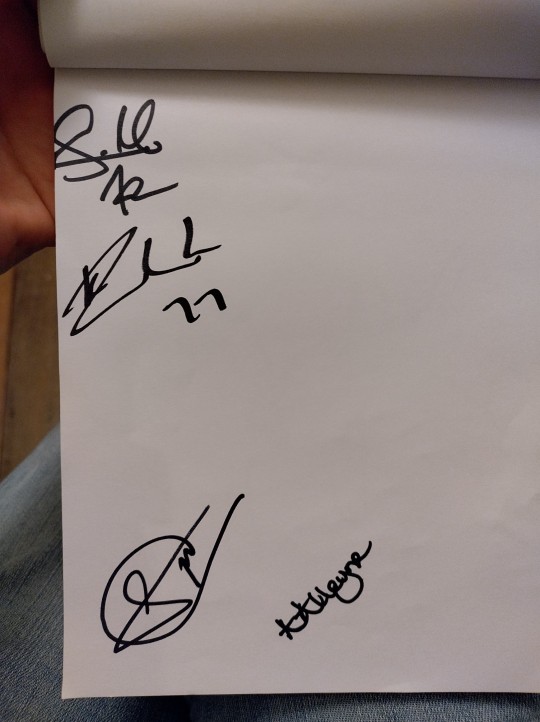
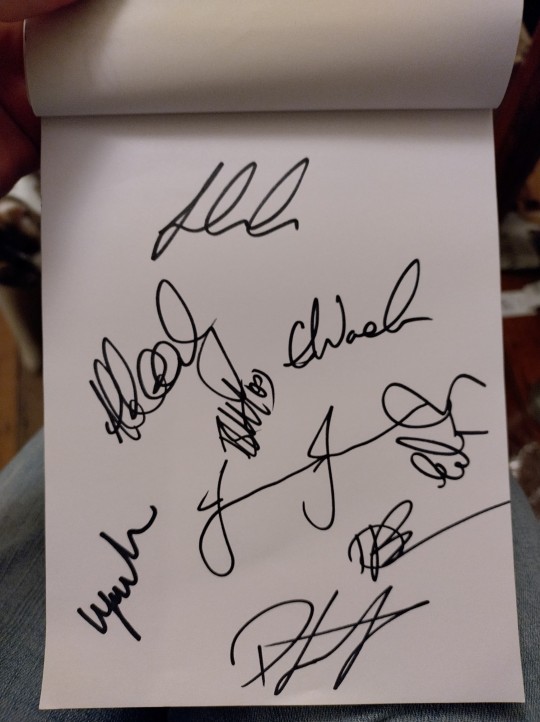
#cricket#womens cricket#T20 cricket#aus vs windies#T20 international#hayley matthews#phoebe litchfield#darcie brown#alyssa healey#ash gardner#elyse perry#allan border field#not enough people posting cricket#i guess i have to do everything myself#grumble grumble#swooflia posts
2 notes
·
View notes
Text

Clipping from John Brady's "Frank & Ava: in love and war" (2017)
0 notes
Text
Very interesting + concise article, pertinent with how much I've seen the joke about that "sadness in his eyes you only see in east european gay porn". Warning for pretty much everything you can expect.
Describing the wave of Eastern European gay pornography that flooded the US market following the dissolution of the USSR, Jones said: “They were products of a crude imperialist enterprise: cheap and nasty looking, with an atmosphere of coercion and cultural misunderstanding pervading them. Customers adored these videos, and expressed their breathless admiration whenever given the chance”
It gets pretty rough from here onward.
The Fall… opens with a short clip of a young man in profile, undressing. He looks uncomfortable, alternating between staring forward and glancing in the direction of the camera, his eyes showing a mix of discomfort and contempt. Jones’ voiceover states: “even in an unlikely place, it is possible to find traces of recent history” followed by b-roll taken from the aforementioned porn films including maps of the former USSR, market scenes, beggars and street footage. Their purpose in the aforementioned films appears to be part exoticism and part poverty fetishism, attempting to show the former glory of the Eastern nations as an emphasis on their subsequent fall. They’re an essential part of the set-up, speaking directly to what made this genre of pornography appealing to a western, primarily American, market. It’s easy to comprehend the mixture of exploitation and exoticism that made these videos popular in the US, but Jones goes further, aiming to establish a firm link between the booming Western economy and a more global, less visible form of exploitation.
The latter half of the film compounds the atmosphere of coercion, focusing specifically on the casting and screen tests of performers. The voice from behind the camera probes the subject on their sexual preferences, their motivations for being filmed: “I’m doing it for the money” “That’s a very good reason” Western audiences were turned on by the idea that the performers were under some form of duress—the ostensibly straight man either consuming their sexuality through the guise of pornography, or in the case of several scenes, the performer showing visible discomfort at either the sex or the presence of the camera. The films are low budget, low production value and low brow—by intention, rather than necessity. Jones speculates that the developing Eastern European sex industry, with the influx of Western producers and a Western market in mind, could be seen as an indicator of fertile ground for fascist ideologies—an aspersion confirmed by the global rise of far-right ideologies in tandem with the economic pressure of late-stage capitalism, a point at which more contemporary comparisons can be made.
The brief conclusion on the contemporary form of this exploitation aesthetic is also noteworthy:
In the same way that the fall of communism was exploited by the West, the financial and social insecurity of a generation living in recession, under permanent austerity, is exploited now. The aesthetics utilised in Jones’ film are still broadly present, albeit perhaps in a slightly altered form, now accompanied by a new visual language born from a culture numb to being told to “like, comment, share and subscribe”.
742 notes
·
View notes
Text
Anne of the Island - the last chunk of the book
I'm going to SPEEDRUN several chapters here because I cannot believe I came back on the LAST day of book club! This is going to be very long but I can't just skip to the end.
Just to add to the list of reasons I hate Mrs Douglas, she would think it frivolous of Janet to wear a pretty dress but sees no issue with wearing nicely tailored silk dresses herself!
Ugh the hateful woman can sure design a high tea menu. Does she take time off from Evil Plotting to read women's magazines?
Imagine if Mrs Douglas lived another 10 years?? Insanity
I never want to hear shit about how age makes you more forgiving. If anything, I was more patient in some ways in my 20s, than in my 30s. Good for Janet and John but the fact they won't tell people what Mrs Douglas did is SO frustrating!
Heavily relate to the humour and horror associated with reading your own old work. At some point, I learned not to stuff pop culture references in every crevice, but before that, it was a bloodbath of song lyrics and viral memes and movie references.
Bring back walking parties, I say! I enjoy walking around and wish I could do more of it with my friends.
Anne's mental note about Christine's walk lol
The scene of the Gardner visit is one of my favourites in this book. I weep for Pris' cake. She could've just offered them some but chose the much funnier option.
I'd never heard the name Aline before when I'd first read AoI. And then many years later, I found it in one of Lisa Kleypas' Regency romances. It's one of those names I've remembered for having felt somewhat unfamiliar to me. Pretty, though.
Lmao remembering how I furtively looked up 'gumption' in the dictionary at 11 years old, almost as if Aunt Jimsie's ghost would catch me in the act and judge me for it.

Look, I don't care how Phil reacted when Anne turned down Roy's proposal. You'll never convince me that she wasn't playing the long game to get Anne and Gilbert together.
Gilbert just needs a hug. :( Imagine seeing Anne carry your flowers at convocation and your foolish heart thinking may be there's something there for you after all and then bravely asking her for a dance at the graduation party even though your head is telling you it's a bad idea only to be turned down again!!
I've moved around a bunch in my life and I definitely feel like I've left pieces of me behind in every place I've spent meaningful time in! I wholeheartedly agree with Phil's sentiments about places acquiring personalities.
I do wish we got to see more of the very prescient Stella! She's said a handful of lines in the entire book and most of them have been very insightful or practically useful.
I actually think more highly of Phil for being hard on Anne initially. I know, I know, there's a lot of 'we support women's rights, but more importantly, we support women's wrongs' feeling I see around on social media. And I'm mostly for it, even. But I do think it's important to hold your friends accountable and have difficult conversations sometimes.
The image of Roy pining away over women who didn't even know he was into them, probably, is killing me lmao.
I know Mrs Lynde is being very bitter about Jane but it comes entirely out of her love for Anne so I can't be mad about it.
Lol now why is Mrs Harmon salty about Anne's BA? Didn't she think it was pointless anyway? Or am I misremembering?
Ugh this woman is just unrelentingly bitchy.
Reddit would hate the age gap between Mr Inglis and Jane lmaoo

Looked this up and it seems to refer to HW Longfellow's poem Evangeline, A Tale of Acadie. Acadie is just Nova Scotia, PEI, NB and part of Maine. Makes sense for a poor minister to not be able to go far on his honeymoon!
One of my baby cousins got married a few days ago and Anne's thoughts about Diana's motherhood are hitting even harder.
Mrs Allan's story about her mother has always made me tear up a bit.
The scene where Anne hears about Gilbert's illness is appropriately awful but I'm dying over Davy's interjections. "He's dying." "Nooo, there's still hope." "The doctor said there's no hope." Absolutely screaming.
The paragraphs where Anne realises she loves Gilbert are SO GOOD. Ugh.
I'll never get tired of LMM's descriptions. It makes me want to see PEI and Canada like nothing else.

I'm obviously partial to Gilbert but also, this is such a top-tier proposal. And to do it in Hester Gray's garden? 5 stars. No notes. Perfect ending.
I've had such a good time doing this book club with you all, I'm sad it's over!
17 notes
·
View notes
Text
winners of australian cricket awards 2025
belinda clark award - annabel sutherland
allan border medal - travis head
betty wilson young cricketer - chloe ainsworth
bradman young cricketer - sam konstas
women's domestic player of the year - georgia voll
men's domestic player of the year - beau webster
men's test player of the year - josh hazlewood
women's odi player of the year - ash gardner
men's odi player of the year - travis head
women's t20 player of the year - beth mooney
men's t20 player of the year - adam zampa
wbbl player of the tournament - jess jonassen and ellyse perry
bbl player of the tournament - cooper connolly and glenn maxwell
#cricket australia#ca awards being the same day as the grammys is kinda hilarious for some reason#BELSY BELINDA CLARK YEEEEE#and very well deserved for trav too
15 notes
·
View notes
Text
Hey, it's a casting announcement!
But first, a synopsis:
Coming in 2025, Heartglass is a modern urban fantasy that centers loss, grief, and corruption in a package that feels like a fairytale. The story is divided between two main throughlines. The three living relatives of the victims of a tragic accident on a viewing platform over the Heartglass desert are attending a memorial service when a violent storm hits the city of Robeson, a storm that shouldn't be possible. In its wake, it drags a whole host of impossible things - including people turning into trees, invisible monsters, and a mysterious cowboy shaman. They are forced to navigate a world that they rapidly realize they do not truly understand.
Meanwhile, the three departed relatives of our protagonists are stuck living in an ice cream shop in Hell. They remember almost nothing about their lives, but they do know they're all bound together by some means that prevents them from separating. When the concept of a communistic scare drives them from their makeshift home, they set off to journey to Hell's only visible landmark - a spire set seemingly forever on the horizon, above which a singular white light radiates the otherwise formless gray expanse. Heartglass is a bizarre and poetic look at the relationship between life, death, and the surreal spaces in between.
Without further ado, our cast!
Starring

Ashleigh Morgan as Maya Graves
Ashleigh has been in several productions both for VO and camera acting, including Simone on the Grand Crew (NBC), Paramedic/Ashleigh on The Rehearsal (HBO), and as Mina Nihrum in Star Wars: The Old Republic.

Shannon Hobby as Piper Stewart
Shannon has been in a number of VO productions for both web series and video games, such as Hannah Daigle's Satina as the titular character, MechWarrior 5: Mercenaries as "Samantha Cole" and as "A5 Strata" in Popup Dungeon.

Adam Pilver as Mark LeBeau
Mark is an accomplished screen actor making his break into VO work in this role. His previous roles include parts on I Love That For You as "Dr. Gilberg" (Showtime), "Keith" on Shrinking (Apple TV+), and "ICE Agent Jones" on S.W.A.T (CBS)

Henry Korba-Babcock as James Gently
Henry is a voice actor, appearing on audiobooks previously, as well as appearances on The Innkeeper and SCP Un[REDACTED].

Rae Lundberg as Allan Coleman
Rae is an accomplished audio drama actor, with appearances on their show The Night Post as "Val Torres" and "The Stranger," as well as "Ran Fishercliff" on Eeler's Choice and "Jamilla Gardner" on Woe.Begone

Jamie-Lyn Markos as Mother Seraphina
Jamie-Lyn has appeared on both audio dramas and screen as a talented VO artist, as well as being an accomplished stage actor. Her latest appearances include as "Sister Genevieve" on The Love Talker and as "Sally" in Close Your Eyes.
Also Starring

Aud Andrews as Venan Kamen
Aud is a phenomenally accomplished voice actor, with a nomination for best performance at the 2023 Ambies for his performance as the titular character in The Madness of Chartrulean. Aud also appears in the forthcoming The Dope Show as "Ben."

Rae Witte as Melanie Pappaspiradakos
Rae is another phenomenal actress who has appeared in our very own What's in The Rift as "Alana Rietzkopf" and in Observable Radio and The Dex Legacy. She is also involved in forthcoming projects for Packhowl Media.
Heartglass will release its pilot episode in February in conjunction with our Kickstarter.
Can't wait to see you then!
12 notes
·
View notes
Text


Allan Gardner’s ‘girls smoking meth’ watercolors @ no gallery nyc
124 notes
·
View notes
Text

J. Warren Kerrigan (Jack to his friends) was a popular actor in the early years of silent film. He made as many as 300 movies and shorts between 1910 and 1924.
In 1917, a fan magazines voted Kerrigan the most popular actor. The press dubbed him “The Great God Kerrigan”.
Contrary to Kerrigan on screen persona as a “fast-shooting, buckskin-wearing roughneck”, he had a reputation for being effeminate. Allan Dwan, a director, would harass him on the set. In 1912, while shooting the short “The Poisoned Flume”, Dwan held Kerrigan’s head underwater for the amusement of the crew, forcing the star struggled to break free.
Kerrigan got his revenge. By the next year his star power had risen. He threatened the studio that he would go on strike if they didn’t fire Dwan. Kerrigan got his way.

Kerrigan lived with his mother. When asked by reporters, he said he liked women best when "they leave me alone." As long as he made the studio money, in those early days of Hollywood, they didn’t care. And Kerrigan made them plenty of money.

In 1917 Kerrigan used some of his wealth to build a large house on Cahuenga Blvd, near the Hollywood Bowl. He lived there with his mother. Two years later he met James Vincent, a "juvenile" actor, on the set of “Out of Court”. Vincent, 18 years younger than Kerrigan, was invited to move into the house on Cahuenga. Later Vincent would be referred to as Kerrigan’s secretary or gardner.

In 1922, Hollywood was rocked by off-screen scandals involving movie stars, including Roscoe Arbuckle’s trial for murder of a starlet. The studios hired Will Hays, a Republican politician and Presbyterian minister, to help improve Hollywood’s image with both the public, but perhaps more importantly, Congress.
In 1924, Hayes recommended his "Formula" that would severely control the content of the movies. Plus the studios would be mandated to control the behavior of its stars.
Perhaps it’s no coincidence that Kerrigan decided to retire from acting in 1924. But the next year, he continued to assert his masculinity, by purchasing an ad in Motion Picture Magazine:
“From the time I was 13, I had the support of a family on my hands, Later, my mother and I were so very close that I didn't feel the need of any other companion. It is only since I have been alone that I have had time and opportunity to think of marriage and - so far - I haven't found any girl who would think about it with me! But I will fool 'em! I'm going to catch one, one of these days --- you'll see! J. Warren Kerrigan”
Kerrigan and Vincent would continue to live together at the house on Cahuenga Boulevard. Kerrigan died in 1947 from pneumonia at the age of 67. Sadly, nine months later Vincent took his own life. They had been together for 28 years.

#gay icons#in the closet#J. Warren Kerrigan#silent films#fast-shooting buckskin-wearing roughneck#effeminate#lived with his mother#hollywood scandals#fatty arbuckle#hays office
16 notes
·
View notes
Text




On 17th October 1821 Alexander Gardner, renowned photographer of the American Civil War was born in Paisley.
Some of you wmay not know the name but some of his the photographs should be instantly recognisable. As a young man in Glasgow, he had been a jeweller, then he became editor and publisher of a Glasgow newspaper.
Alexander Gardner was a great admirer of Robert Owen, who was largely responsible for the New Lanark Mills. In 1850, inspired by the New Harmony community established by Owen's son, Gardner, his brother and seven others travelled to the United States. They purchased land and established a cooperative community close to Monona, in Clayton County, Iowa. Gardner returned to Scotland to help raise more money and to recruit new members.
In May, 1851, Gardner visited the Great Exhibition in Hyde Park, where he saw the photographs of Matthew Brady, he would be his inspiration.
On returning to the US with his family in 1856 he learned many of his friends in Iowa had died or were seriously ill with tuberculosis, he decided to stay for a time in New York, where he sought out work with Brady, two years later with his mentors eyesight failing he was put in charge of the Washington Gallery.
Through his friendship with fellow Scot with Allan Pinkerton Gardner met Abraham Lincoln, who was then running for President, along with Brady they made 35 portraits of Abraham Lincoln during the 1860 presidential campaign.
On the outbreak of the American Civil War there was a dramatic increase in the demand for work at Brady's studios as soldiers wanted to be photographed in uniform before going to the front-line. Because all the photographs were given the Brady Studio tag it was he who was given the credit for the work, Gardner and around another 20 assistants however took the pictures. Gardner especially went beyond the front line. Now you have to remember that photography was still in it's infancy and subjects had to pose for pics, there was no action pics, with this in mind Gardner took his camera to the ditches and fields where thousands had fought and died, and pictured them as they lay sprawled at the moment of death. In the history of warfare, it had never been done before.
Perhaps it was a byline,commenting on the photographs in The New York Times in 1962 that read "Mr. Brady has done something to bring home to us the terrible reality and earnestness of war. If he has not brought bodies and laid them in our dooryards and along the streets, he has done something very like it. . . .By the aid of the magnifying glass, the very features of the slain may be distinguished.", that caused Gardner to go his own way in 1862, opening his own studio in Washington.
Gardner was back on the battlefields at Gettysburg portraying grisly results of massed cannon and musketry. He recorded the scenes in an album he named Gardner's Photographic Sketch Book of the Civil War. One particular has become more famous over the past 150 or so years, "Home of a Rebel Sharpshooter." Gardner is said to have moved the body of the soldier for more dramatic effect.
After the war Gardner also took what is considered to be the last photograph of President Abraham Lincoln, just 5 days before his assassination. Gardner would go on to photograph the conspirators who were convicted of killing Lincoln, as well as their execution.
In 1867, Gardner was appointed the official photographer of the Union Pacific Railroad, documenting the building of the railroad in Kansas as well as numerous Native American tribes that he encountered.
Gardner gave up photography to start an insurance company in 1871. He lived in Washington until his death in 1882. Regarding his work he said, “It is designed to speak for itself. As mementos of the fearful struggle through which the country has just passed, it is confidently hoped that it will possess an enduring interest.”
I have deliberately not posted some of pics as even now some are pretty graphic, to photograph the dead and especially an execution leaves a distaste in my mouth, the first pic is Gardner himself, the second Lincoln, the third Lincoln again but fellow Scot Allan Pinkerton to his left, the fourth pic shows the Scaffold for the Lincoln Assassination Conspirators, you can imagine the pics that follow this one
You can google his name you can look through many of the pics if you wish, whereas they might not be as graphic as ones you see online nowadays, they do involve shots of many dead bodies.
Read more about the man here https://www.newworldencyclopedia.org/.../Alexander...
11 notes
·
View notes
Text
























I told a lot of lies and called it a compromise to keep you
1 untitled, inès longevial / 2 home horizons, diango hernández / all pastel blue on white text promise, muna / all white on dark blue text good thing, maple glider / 4 (background image) we live inside a dream, danae panagiotidi / 4c part one of the hatchlings series, georgia sydney jones / 5 & 9 chalet 1, kate sherman / 7a moment of hesitation II, miriam beichert / 7c forever, alan gardner / 10 (background image) das bett, ruprecht von kaufmann / 10f part three of the hatchlings series, georgia sydney jones / 11b part 2 of the hatchlings series: full print, georgia sydney jones / 11d los ojos, clara zaragoza / 13, 15 & 17 if only for a moment, allan gardner / 19 I wish I could tell you I forgive you, edie sunday / 20 from here, diango hernández / 21 untitled, edie sunday / 23 work 99, adam jeppesen / caption: promise by muna
29 notes
·
View notes
Text

THIS WEBSITE REPRESENTS THE EVOLUTION OF MY ARTISTIC CAPABILITY AND THE CONCOMITANT EVOLUTION OF MY ENLIGHTENMENT INTO THE MYSTERIES OF THE UNIVERSE, BOTH PHYSICAL AND NON-PHYSICAL. REFERENCE ALBERT EINSTEIN, CARL JUNG, JOSEPH CAMPBELL, ROBERT GRAVES, ALEISTER CROWLEY, SERGEI RACHMANINOFF, JOHNNY CASH, E.A. WALLIS BUDGE, ROY ORBISON, GODFREY HIGGINS, JOHN M. ALLEGRO, WINSTON CHURCHILL, ZOROASTER, RICHARD WILHELM, ALLAN W. WATTS, STEPHEN JAY GOULD, LEIGH HUNT, FRANCIS THOMPSON, LOREENA MCKENNITT.
I AM SEARCHING FOR A BUYER OF MY ENTIRE ART COLLECTION.
LETTER OF INTRODUCTION 57 PAGE EXPOSITORY MEMO EARLY PERIOD ARTWORK (LOW RESOLUTION) EARLY PERIOD ARTWORK (HIGH RESOLUTION) INTERMEDIATE PERIOD ARTWORK (LOW RESOLUTION) INTERMEDIATE PERIOD ARTWORK (HIGH RESOLUTION) RECENT PERIOD ARTWORK (LOW RESOLUTION) LATE PERIOD ARTWORK (VERY HIGH RESOLUTION) (SEE NOTE BELOW) ATTACHMENTS
NOTE: The various shades of grey background in the images of the Late Period Artwork are an undesirable artifact of the photographic process used to create the digital images. The original color pencil artworks of the Recent Period and the Late Period were created on off-color white pages.
Fred E Howard III 306 Gardner Dr., N.E. Fort Walton Beach, FL 32548 850-244-5465 850-974-1071 (cell: only voicemail) [email protected]
CONTACTS PAGE
All of the artwork images on the website are proprietary and cannot be used for commercial purposes without my written consent or the written consent of Pamela Howard.
2 notes
·
View notes
Text

Ava Gardner and Gregory Peck in The Snows of Kilimanjaro (Henry King, 1952)
Cast: Gregory Peck, Susan Hayward, Ava Gardner, Hildegard Knef, Leo G. Carroll, Torin Thatcher, Ava Norring, Helene Stanley, Marcel Dalio, Vicente Gómez, Richard Allan. Screenplay: Casey Robinson, based on a story by Ernest Hemingway. Cinematography: Leon Shamroy. John DeCuir, Lyle R. Wheeler. Film editing: Barbara McLean. Music: Bernard Herrmann.
The film version of The Snows of Kilimanjaro is handsome and dull, just like its protagonist, Harry Street, who lies waiting for death on the plains below the mountain as his life flashes past his eyes. Harry is a writer who has spent his life doing all the things he thinks a writer should, which amounts to a men's magazine version of masculinity: hunting big game, going to bullfights and to war, and sleeping with beautiful women. The actor who plays Harry, Gregory Peck, is handsome, too. And if he's also a little dull it's because Peck is miscast: The part needs an actor with a lived-in face, someone like Humphrey Bogart, who was considered for the role. At 36, Peck was about ten years too young for the role. (The 52-year-old Bogart might have been a shade too old.) Still, Peck does what he can, and it's credible that women like Ava Gardner, Susan Hayward, and Hildegard Knef would have fallen hard for him. But the screenplay by Casey Robinson is a rambling muddle that turns Hemingway's spare prose into melodrama, partly by crafting Gardner's role out of nothing -- or borrowing hints of it from other Hemingway works like The Sun Also Rises and A Farewell to Arms. Henry King, one of those studio directors who were handed big projects because they wouldn't mess them up, brings no particular vision or style to the film. The handsomeness of the movie is mostly in its casting, and in the Oscar-nominated cinematography of Leon Shamroy. Bernard Herrmann's score helps, too.
4 notes
·
View notes
Text


𝐈𝐊𝐒𝐈𝐃𝐀𝐎𝐑𝐕𝐀𝐋𝐈 ⸻ independent, mutual exclusive, and selective multimuse blog for 𝒄𝒂𝒏𝒐𝒏 & 𝒐𝒓𝒊𝒈𝒊𝒏𝒂𝒍 𝒄𝒉𝒂𝒓𝒂𝒄𝒕𝒆𝒓𝒔 based within the world of a song of ice and fire / house of the dragon / etc. sung by august (30, est, she/her) since february 2025. sideblog to @rooneynatural.

doc. muses. promo. starters. memes. blogroll. house ornio (wip). house belaerys (wip). house faerson (wip). house vharyoos (wip).

affiliated with: @rinarogare
psd, promo, & graphic template credits : @calirph

𝒎𝒖𝒔𝒆𝒔 𝒃𝒆𝒍𝒐𝒘 𝒕𝒉𝒆 𝒄𝒖𝒕...
𝑽𝒚𝒔𝒆𝒍𝒍𝒂 𝑩𝒆𝒍𝒂𝒆𝒓𝒚𝒔. gabriella wilde. lady of drakehall (original) | conquest era
𝑹𝒚𝒆𝒍𝒍𝒂 𝑾𝒉𝒆𝒏𝒕. abigail cowen. lady of harrenhal (original) | any era
𝑶𝒓𝒓𝒊𝒏𝒂 𝑶𝒓𝒏𝒊𝒐. bella dayne. liege of hornstone (original) | conquest era
𝑱𝒂𝒆𝒏𝒂𝒓𝒂 𝑩𝒆𝒍𝒂𝒆𝒓𝒚𝒔. katheryn winnick. lady of drakehall (canon) | early post doom era
𝑴𝒂𝒆𝒍𝒚𝒂 𝑻𝒓𝒂𝒏𝒕. dove cameron. lady of gallowsgrey (original) | any era
𝑳𝒖𝒄𝒆𝒓𝒓𝒂 𝑩𝒆𝒍𝒂𝒆𝒓𝒚𝒔. hunter schafer. lady of drakehall (original) | early post doom era
𝑱𝒂𝒆𝒉𝒂𝒆𝒓𝒂 𝑻𝒂𝒓𝒈𝒂𝒓𝒚𝒆𝒏. kiki rockwell. princess/queen of westeros (canon) | dance era
𝑽𝒊𝒔𝒆𝒏𝒚𝒂 𝑻𝒂𝒓𝒈𝒂𝒓𝒚𝒆𝒏. freya allan. princess westeros (canon) | dance era
𝑬𝒓𝒆𝒏𝒂 𝑭𝒍𝒊𝒏𝒕. frida gustavsson. lady of widow's watch (original) | any era
𝑬𝒐𝒘𝒚𝒏 𝑨𝒓𝒓𝒚𝒏. hannah dodd. lady of the eyrie (original) | any era
𝑶𝒓𝒆𝒂 𝑶𝒓𝒏𝒊𝒐. thea sofie loch naess. lady of hornstone (original) | game of thrones era
𝑳𝒂𝒆𝒏𝒂 𝑸𝒐𝒓𝒂𝒕𝒉. bruna marquezine. lady of asshai (original) | any era
𝑳𝒖𝒄𝒆𝒏𝒚𝒂 𝑩𝒆𝒍𝒂𝒆𝒓𝒚𝒔. virginia gardner. lady of drakehall (original) | dance era
𝑴𝒊𝒏𝒆 𝑲𝒆𝒍𝒆𝒔. derya pinar ak. lady of point fare (original) | dance tba
𝑨𝒎𝒂𝒓𝒆𝒊 𝑭𝒂𝒆𝒓𝒔𝒐𝒏. minatozaki sana. lady of goldenring (original) | dance tba
𝑹𝒐𝒔𝒍𝒊𝒏 𝑭𝒂𝒆𝒓𝒔𝒐𝒏. kondou chisa. lady of goldenring (original) | dance tba
𝑴𝒂𝒓𝒊𝒔 𝑺𝒑𝒚𝒓𝒆. cher lloyd. lady of the spyre (original) | game of thrones era
𝑨𝒆𝒓𝒆𝒂 𝑻𝒂𝒓𝒈𝒂𝒓𝒚𝒆𝒏. tamzin merchant. princess of dragonstone (canon) | between conquest and dance era
𝑨𝒔𝒉𝒂𝒓𝒂 𝑽𝒉𝒂𝒓𝒚𝒐��𝒔. selena gomez. lady of fool's oasis (original) | dance era
𝑵𝒚𝒎𝒆𝒓𝒊𝒂 𝑽𝒉𝒂𝒓𝒚𝒐𝒐𝒔. jenna ortega. lady of fool's oasis (original) | dance era
𝑺𝒂𝒓𝒆𝒍𝒍𝒂 𝑺𝒂𝒏𝒅. rachel zegler. lady of fool's oasis (original) | dance era

0 notes
